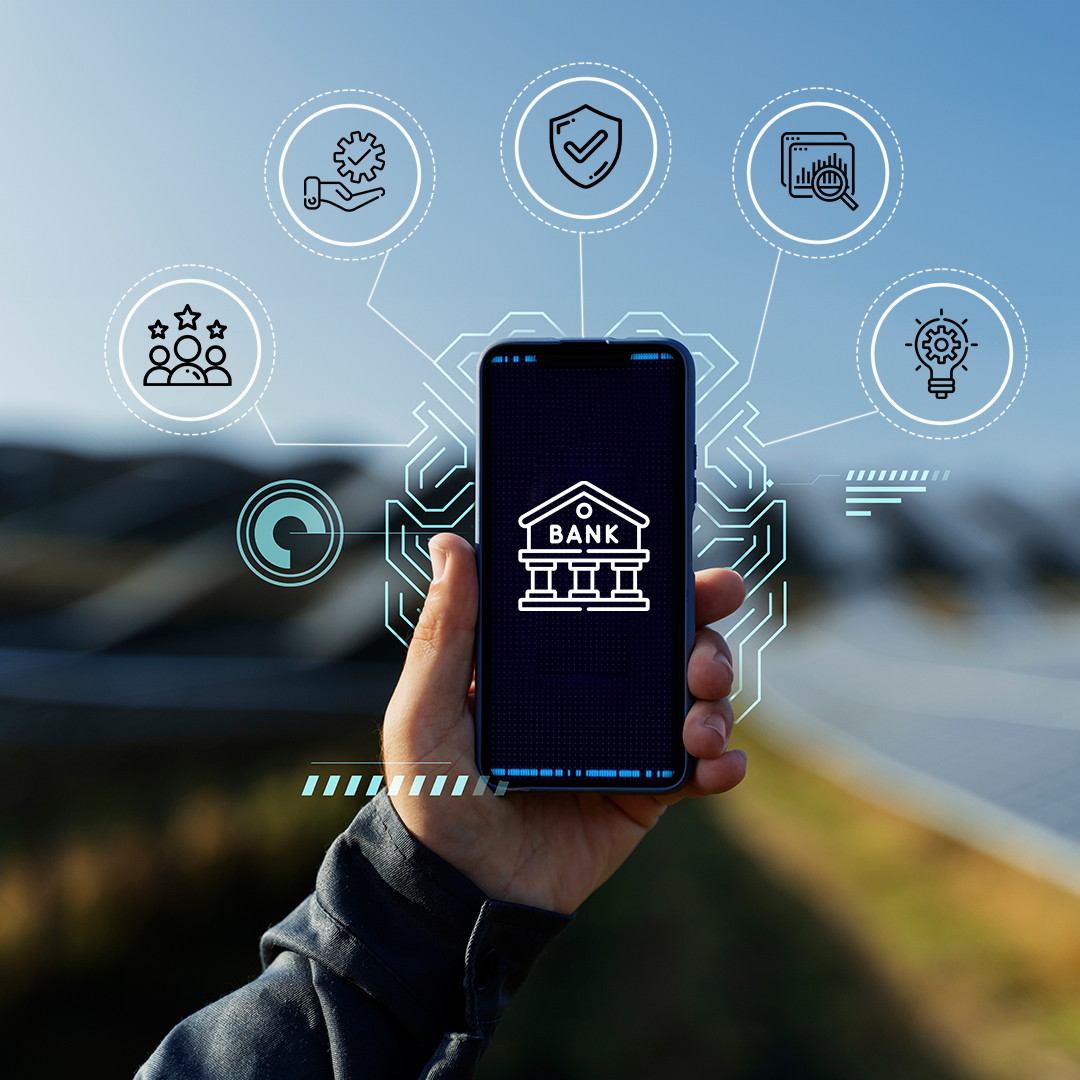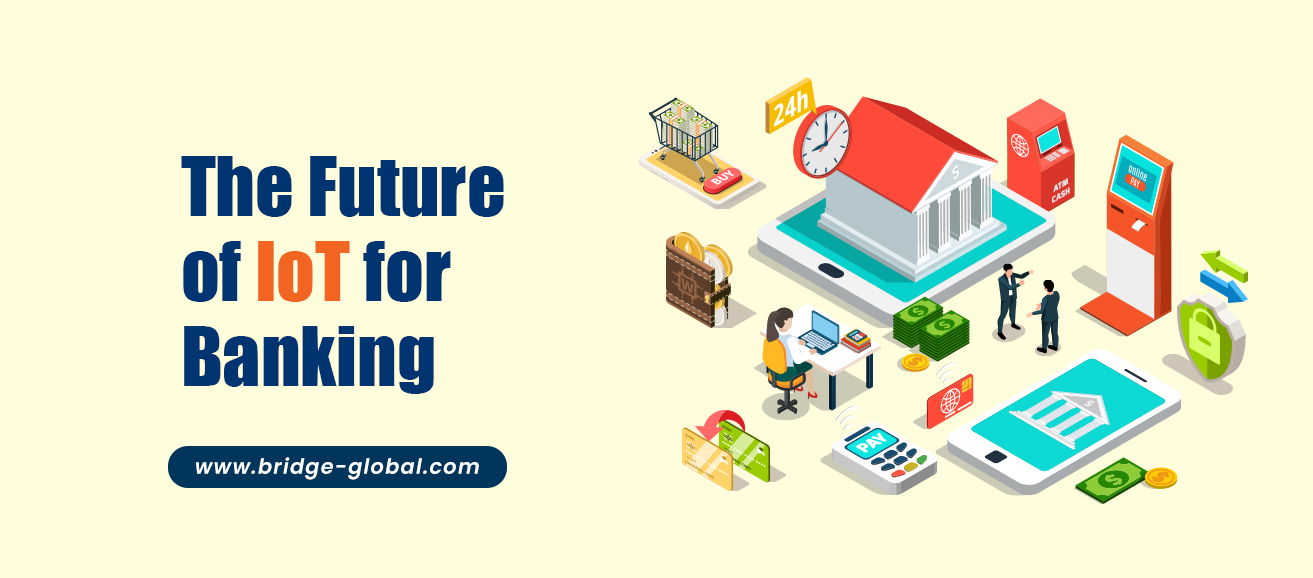IoT for Banking: What Its Future Holds for The Banking and Financial Industry
The Internet of Things (IoT) for banking is set to disrupt the industry. Smart gadgets are already ubiquitous in daily life, thanks to IoT services. Their widespread acceptance influences how everyone handles their money and for businesses to keep up with digital transformation.
We all desire smooth and uncomplicated digital services these days. Thus financial institutions are investing substantially in the emerging frontier of IoT solutions. Experts predict that the smart banking business will develop at a staggeringly compounded annual pace in the coming years.
Such growth is certain to usher in whole new methods of banking with the help of professional IoT development services. With IoT software specifically tailored to the Financial Technology (FinTech) industry, it is majorly seeing unprecedented progress along with other major groundbreaking technologies.
So, how does this influence you and other financial industry players when you have the support of a capable IoT development company? Let's take a look at everything you need to know about IoT for banking to prepare for a smart banking future.
What Is the IoT for Banking?
The Internet of Things (IoT) in banking refers to a network of interconnected devices that collect data for financial services. Devices and sensors are always in close proximity to end users with the help of IoT software. This enables the tracking of human behavior in a wide range of scenarios. A specifically built IoT solution allows connected assets to analyze real-time activity for acquiring accurate and context-specific data.
Modern banking businesses use IoT for the same reason but with an emphasis on smart banking and digital transformation with the support of a seasoned IoT development company. Financial organizations provide customer-facing services, therefore "last mile" or "endpoint" data can provide valuable insights into the consumer banking experience. IoT for banking facilitates the digital connection between banks and their human clients.
What Benefits Can IoT for Banking Bring to The Industry?
The usage of IoT development services has risen across the banking sector. It is being used to accelerate and streamline business activities by leveraging data. This enables banking institutions to accurately handle credit ratings, loan applications, fraud detection, and more.
The Internet of Things (IoT) fosters digital connectivity to banking consumers and provides financial institutions with various benefits as well. They are:

1. Customer-Centricity
IoT for banking enables banks to create personalized services. Smart gadgets using IoT solutions/software immediately assess consumer activity. The data generated from such activities helps banks understand client preferences, needs, and requirements. This along with Financial Technology (FinTech) helps banks to provide targeted advice that will eventually increase their conversion rates.
IoT services allow banks to gather user account activity and data to provide personalized insurance plans, investment options, loan offers, and more. The Internet of Things (IoT) considers location-based services for banks to transmit relevant information depending on the region where each customer lives.
The result is an overall enhancement to the digital banking customer experience (CX) with the help of expert UI & UX services. Customers who have a positive CX score are six times more likely to stay with the bank than those who are unsatisfied.
2. Operational Efficiency
The Internet of Things (IoT) along with Financial Technology (FinTech) significantly enables higher optimization of company resources. Devices integrated with IoT software communicate with the nearby banking environments to speed up procedures. Essentially, financial institutions leveraging IoT for banking are more efficient than those employing traditional banking methods.
Finance IoT development services/technologies execute routine maintenance chores that typically require substantial human work. Digital tools automate monotonous operations, lower expenses, and increase productivity. Smart banking devices using IoT also assist consumers by introducing convenience and service automation into their daily lives. The Internet of Things (IoT) is reshaping banking technology to improve efficiency, profitability, and digital transformation.
3. Improved Security
IoT for banking can also fortify banking security postures. Consumer gadgets are network endpoints that are vulnerable to cyberattacks. Banks can improve the protection of sensitive client data by connecting each equipment to a secure. This is done through IoT services-enabled communication networks and proficient cloud services.
IoT solutions using smartphone biometrics can boost the security of digital bank accounts and contactless payments. Similarly, persistent monitoring of all bank application activities with IoT software helps detect cases of fraud during wireless payments. Banking organizations can also roll out security fixes using the network to quickly address vulnerabilities against new threats. This level of security resilience is critical for the financial sector with the backing of IoT development services.
4. Data-Driven Analysis
IoT solutions made with competent custom software development enable financial companies to gain useful data from their physical banking infrastructures. Devices using the Internet of Things (IoT) continuously convey real-time data from millions of contacts between clients and banks. This richness of data feeds big data analytics in banking to significantly improve decision-making.
IoT Financial Technology (FinTech) portfolio analysis provides risk information that might influence asset management choices. Account analysis is more effective than traditional techniques for determining creditworthiness since it measures consumer behavior. Even exchange data obtained from financial transaction monitoring may be used to advise managers and forecast market developments. Such data-driven decision-making benefits the organization in the smart banking domain.
5. Innovation
IoT for banking puts banks in a strong position for digital transformation. Consumers increasingly demand popular services to be supported by a secure infrastructure. Although capable mobile app development is used for digital wallets and contactless payments, they are only compatible with mobile devices and functioning point-of-sale (POS) systems. As a result, organizations that deploy IoT infrastructure early will be better positioned to improve financial services in response to client demand.
What Does The Future of IoT for Banking Look Like?

With potentially practical applications, IoT for banking only seems to be growing. Numerous, common patterns would most likely characterize the future trajectory of this progressive movement in the following ways.
1. Expansion
Expect broad adoption of IoT IoT software-enabled gadgets. Interconnected automobiles, revolutionary smartphones, and other wearable technologies will become increasingly important. This will open up more opportunities for banking services using IoT solutions. They will be usage-based insurance plans and tailored investment banking solutions.
2. Integration
IoT IoT software technology will likely integrate with other upcoming technologies. Artificial intelligence (AI) and machine learning (ML) can quickly optimize data-gathering equipment. The continued usage of blockchain technology can help decentralized autonomous organizations (DAOs) and other kinds of anonymous peer-to-peer lending. Banking systems will also integrate with edge computing along with IoT development services to provide fast and secure device banking.
3. Collaboration
The Smart Banking sector will also form new industrial collaborations. The Insurtech and Financial Technology (FinTech) industries (with their inclination for technological integration) are expected to harness the benefits of IoT. Fraud detection and cybersecurity organizations will work with banks to solve security problems. Governments will also establish compliance rules to guarantee the ethical usage of IoT devices and for digital transformation.
Closing Thoughts
The banking sector is slated to be transformed by the IoT for banking. Smart devices provide banks with new opportunities to reach out to their clients, as well as security and operational efficiency benefits. IoT use cases in banking will continue to rise in volume and applicability. As customers demand more digital services, early IoT adopters will certainly earn a competitive advantage and a larger market share. You can achieve this by partnering with an acclaimed and established IoT development company.



